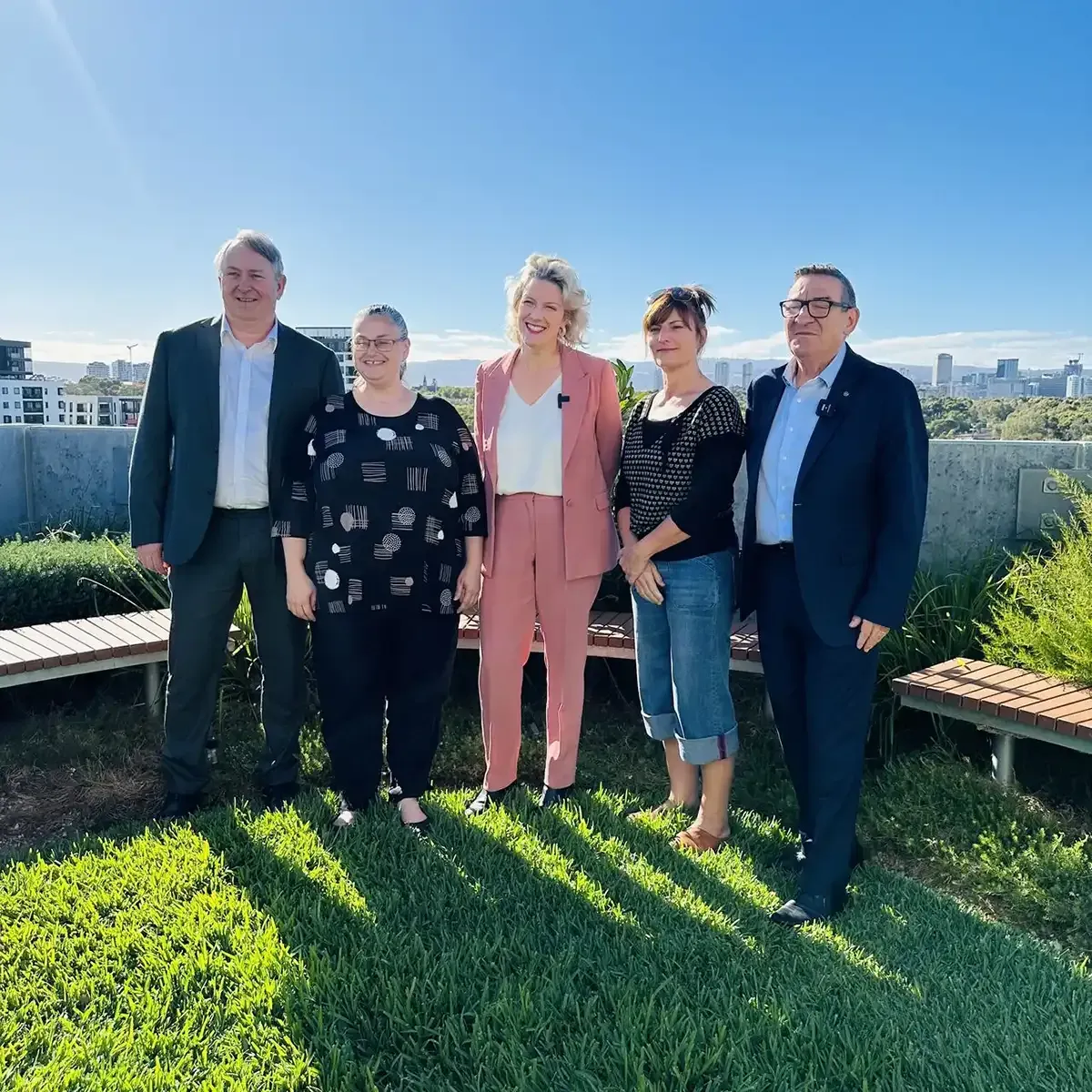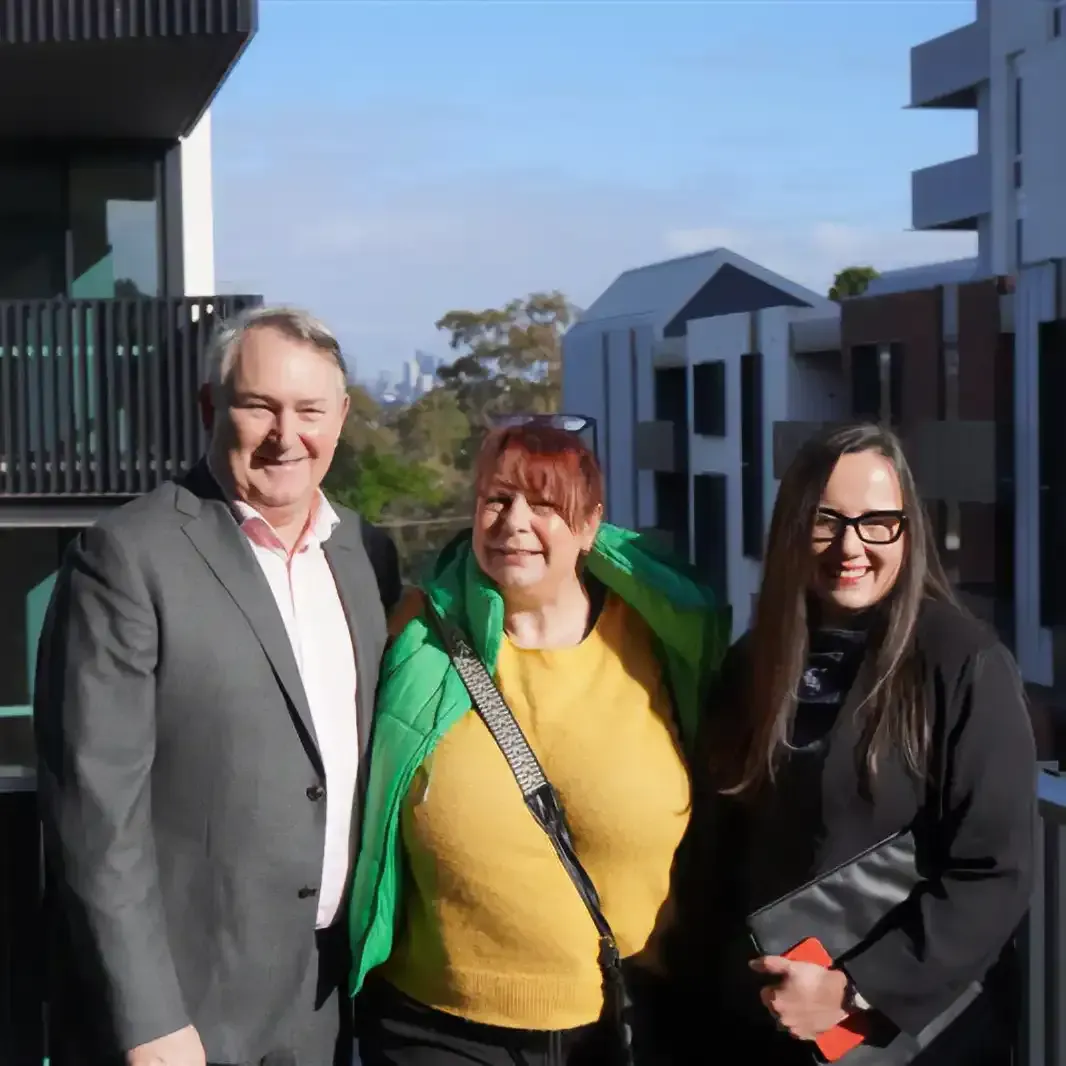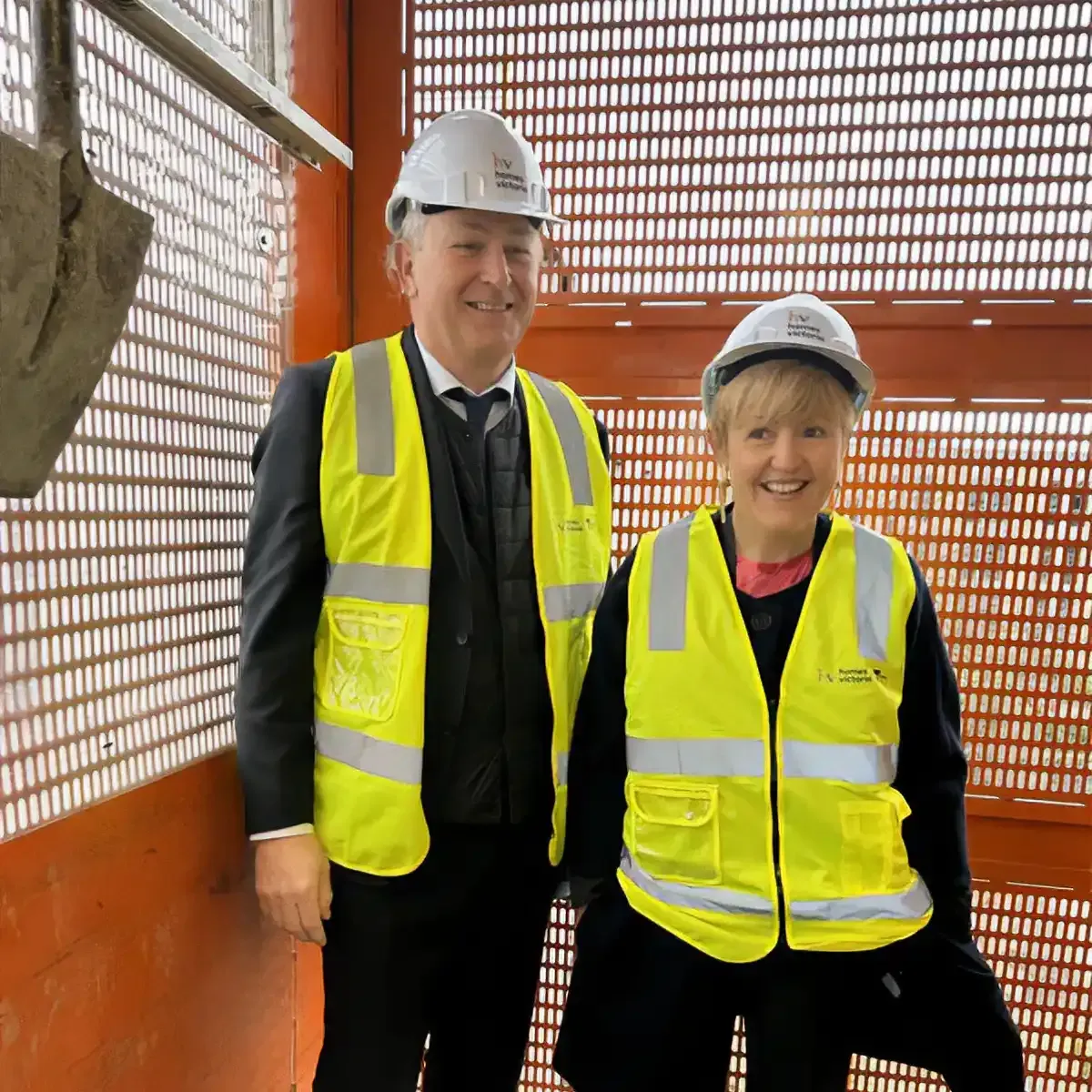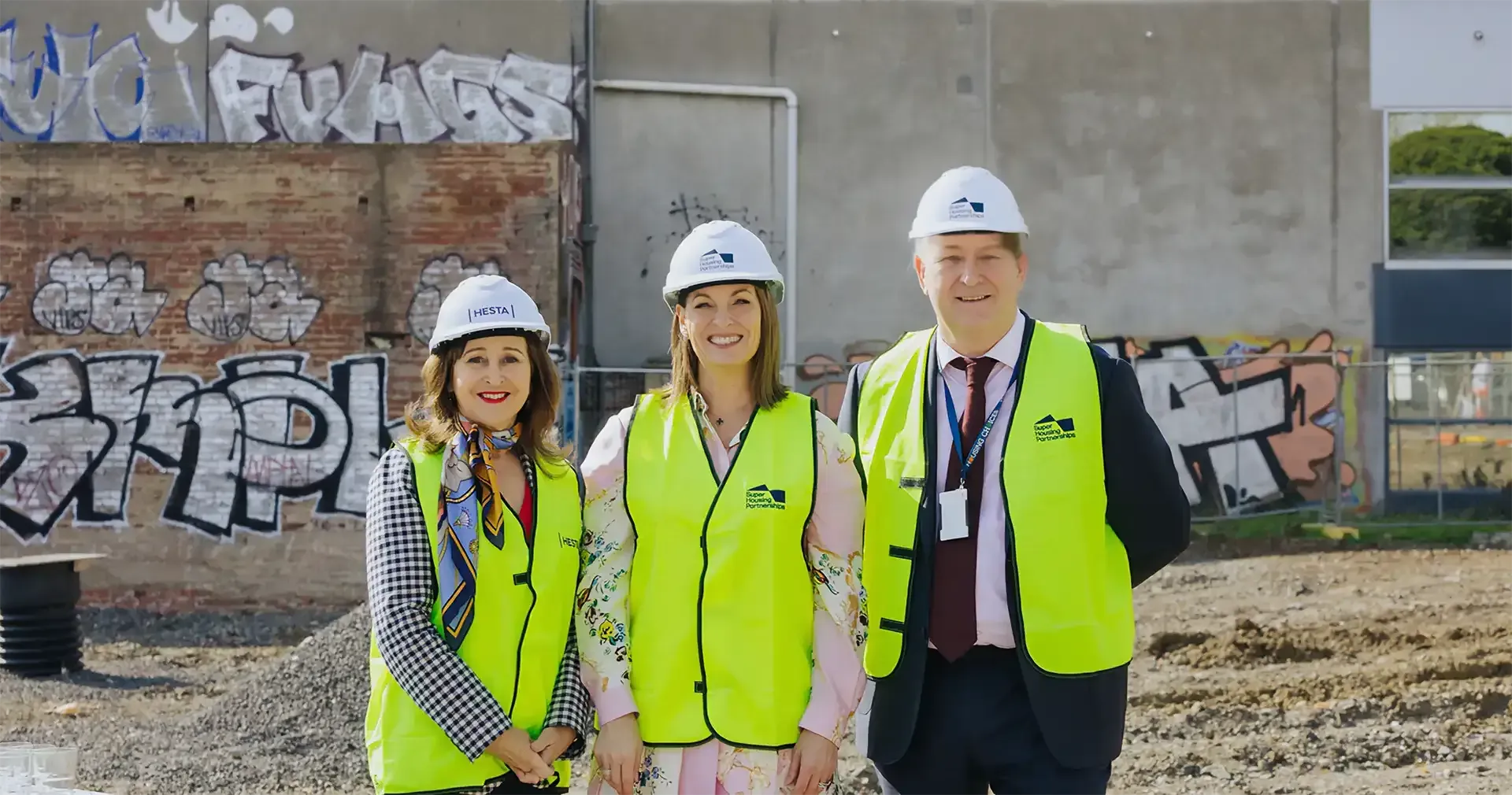A Career in Housing: David Fisher, Housing Choices Australia
With a passion for social justice, David Fisher, CEO of Housing Choices Australia, has forged a successful career tackling homelessness. HousingWORKS sat down with him to learn more about his career in social housing.
David Fisher describes himself as being "driven by a sense of purpose". Graduating from the University of Greenwich with a Bachelor in Urban Geography in 1986, it’s this sense of purpose that saw him forgo what might have been a more lucrative career as a civil engineer. Instead, he chose to help the most vulnerable of us secure shelter and find the support we need to keep our heads above water.
He says it was the social injustice he saw all around him in 1980s' London that ultimately steered his course: “I was halfway through my undergraduate honours degree and really struck by the inequality associated with a supply of affordable housing development, so that's why I actively pursued a career in housing."
“It wasn't really about financial matters," he clarifies. "I deeply believe that housing and support services can—and do—change people's lives. So, that was a summary of my career in... What was that? Two sentences? [laughs]."
David's entry into the world of social housing coincided with almost revolutionary change in the UK’s government, social and community housing sector. He believes the upheaval—some of it necessary; some, perhaps not so much—was due to the inter-related effects of major policy changes. He sees the introduction of minimum housing standards and large-scale adjustments to the funding model for the supply of social housing as having the most profound impacts.
“The introduction of minimum housing standards drove a substantial transfer in assets from government into the equivalent of the community housing sector," he explains. "On the back of those assets being owned by the community housing sector, large-scale investment was made into those houses to bring them up to the new minimum standards.”
“At the time, I led a number of successful transfers, which were typically followed by a substantial capital investment in the stock and associated organisational change programs because the stock and the staff came across [to the new entity].”
“I think the other significant policy change was modifying the funding model for the supply of social housing," he adds. "It went from capital grants of 90% to approximately 20%. Reductions in funding for the community housing sector propelled it towards the introduction of market rents and market sales of affordable housing as a mechanism to cross subsidise and continue the supply of social housing.“
It may have been a necessary change, but from a financial and cultural perspective, it also introduced an entirely new set of challenges for the organisations affected.
“Overnight, the risk profile of individual organisations in the sector increased significantly," David explains, "because they were now accessing equity and managing substantial treasury and cash flow risks. They were raising debts themselves, and the regulations had to change to oversee the risks associated with doing all of that effectively .”
“Those changes had a profound effect on the sector," he continues. "It changed the culture of organisations. It changed the size and the scale of individual organisations and the sector as a whole. Looking back over those two decades, the sector just grew exponentially. And I think it was down to those things––a change in introduction of policy around minimum home standards that drove transferring of assets and investment in social housing, and then the change in the funding structure and the change in regulation––those were probably the most significant.”
"Overnight, the risk profile of individual organisations in the sector increased significantly."


Furthermore, the upheavals led to a major cultural adjustment. David diplomatically describes this process as the “maturity” of community and social housing. Although the changes weren’t without pain, he saw organisations incrementally mature in how they were governed, set up their financial structures and their ability to manage risks.
“I think that was a real benefit. It made individual organisations and the sector stronger and with a greater capacity to do more.”
Looking back, however, David laments the loss of focus on general service standards: “When those changes were made around funding, I think what was lost was a focus on customer services and customer standards. There was a focus on growth and increasing the supply of housing, which has obviously got to be welcomed, but we lost sight of maintaining customer standards and customer services at the same time. You see that now in a variety of unfortunate ways.”
“If you look at what's happening in the UK at the moment, I think that's starting to be recognised with the reintroduction of regulations around customer service standards, and a refocus around health and safety associated with property standards.”
It was in 2016 that opportunity knocked on David’s door to head to Antipodean lands and take up the role of CEO at Housing Plus - then based in the central west of New South Wales in Orange.Tasked with growing Housing Plus’ footprint from beyond the state’s regional west and further into regional NSW, David oversaw some huge achievements, including a five-fold expansion of Housing Plus's community services. This included domestic violence and family support, the delivery of the largest regional social and community home building program of 320 new dwellings and building partnerships, and securing funding to construct 20 women’s refuges across regional NSW, making Housing Plus one of the largest domestic and family violence accommodation providers in the region.
“It was a really great organisation that showed me the impact that community housing providers can have on the supply of housing and in the broader provision of support services and how they can sustain tenancies and build independence,” David reflects.
For a brief period, David was also on the board of Homelessness New South Wales, and the New South Wales Council of Social Services: “They gave me a great insight into those sectors and the contribution that community housing providers can play.”
"I think that was a real benefit. It made individual organisations and the sector stronger and with a greater capacity to do more."
While he is proud of the growth achieved at Housing Plus under a combination of his stewardship and the passion - and hard work of the people they employ - he’s perhaps most grateful for the opportunity to experience a perspective of Australia beyond the postcard images of our major cities.
“We always wanted to work and live in Australia,” he says of his family's move. “While it's great to be working for Housing Choices, and to be based here in Melbourne - which is a fantastic city, one of many in Australia - I was very fortunate to live and work in regional Australia. I think it gave me the opportunity to meet some fantastic people and learn a lot about this great country. I miss some of that connection to country that happens when you live in regional towns and cities. It was a great introduction to Australia, and gave me a good platform to start to appreciate what makes it so special.”
Apart from wanting to work and live in Australia, David was impressed by the capacity for growth in Australia and Aotearoa New Zealand, something he wants to harness in his current role as CEO of Housing Choices Australia; a position he assumed in 2023.


“It’s growing fast,” he expounds. “Perhaps the pace has even increased as the housing crisis has taken hold, and it really presents opportunities for organisations to have genuine impact at scale on the lives of their residents and their wider communities.”“I think Australia and New Zealand are absolutely unique places with unique challenges," he says of his experiences on this side of the world. "I think some of my own personal experiences working with large national organisations who went through that maturing phase - where the organisations had to become much more focused on the kind of impact they're trying to achieve strategically, whether or not that's focusing on growth or delivering much better higher standard services—and the capability that organisations need to have to be able to operate at scale is, I think, has been quite important to understand.”
"You need to have much more focus on how you're investing in your people, your technology, your governance, your risk management, your financial structures. That's when there's relevance to working in the UK and working here.”
Like everyone, the lack of investment in housing sticks firmly in David’s craw: “There are many reports, and many people have spoken on it––the need for social and affordable housing is obvious. The biggest frustration is the investment into the sector to allow it to do what it's good at: community-based housing services and the supply of community-based housing.”
"I think Australia and New Zealand are absolutely unique places with unique challenges."
“But I’m encouraged the state and federal governments, as well as a number of councils, are starting to invest and support the supply of more social and affordable housing,” he adds quickly and positively. “The only way we're going to end this loop and break the cycle is if we can have national plans to increase the supply housing. And I would say that the partnerships community housing providers can establish between councils, state governments and federal governments allow us to play an important part in the supply of more housing—which is ultimately the only way that we're going to get ourselves out of this housing crisis.”
Away from work, while keeping an eye on his beloved Hibernian in the Scottish Premier League, David loves the outdoors, dividing his time between fishing, cricket and tennis, depending on the season.
“I've got a family - I've got three kids, a wife, and there are always things to do around the house and things to do with them. But I would say, for myself, it's fishing, cricket and tennis. In that order. I’m not very good at them, by the way, but yeah, in that order.”

“I think I've been very lucky to have worked with some really great people," David admits, including his team at Housing Choices, describing himself as "standing on the shoulders of giants". "Collectively, there have been amazing achievements, growing organisations and changing and setting new standards of services and new ways of working, being involved in large-scale housing projects. The list goes on. But I'm probably most proud of my colleagues. I just think what my colleagues have achieved has been amazing, and I'm part of that, but I really see it as being a collaborative team effort."
His advice for people beginning a career in social, affordable and community housing? Be ready to answer the door when opportunity knocks, which it inevitably will.
“The housing industry offers a unique career. It’s increasingly commercial while offering the ability to change people's lives. It's not for the faint-hearted. The pace and volume of work can be overwhelming at times, especially when the demand for services and housing goes far beyond what’s available now. But you get to work with great people, with a common sense of purpose that can really change people's lives.”
Other articles you may like

We acknowledge the Wathaurong, Yuin, Gulidjan, and Whadjuk people as the traditional owners of the land where our team work flexibly from their homes and office spaces. Ahi Australia recognises Aboriginal and Torres Strait Islander peoples as the first inhabitants of Australia and the traditional custodians of the lands where we live, learn and work. Ahi New Zealand acknowledges Māori as tangata whenua and Treaty of Waitangi partners in Aotearoa New Zealand.
Copyright © 2023 Australasian Housing Institute
site by mulcahymarketing.com.au



